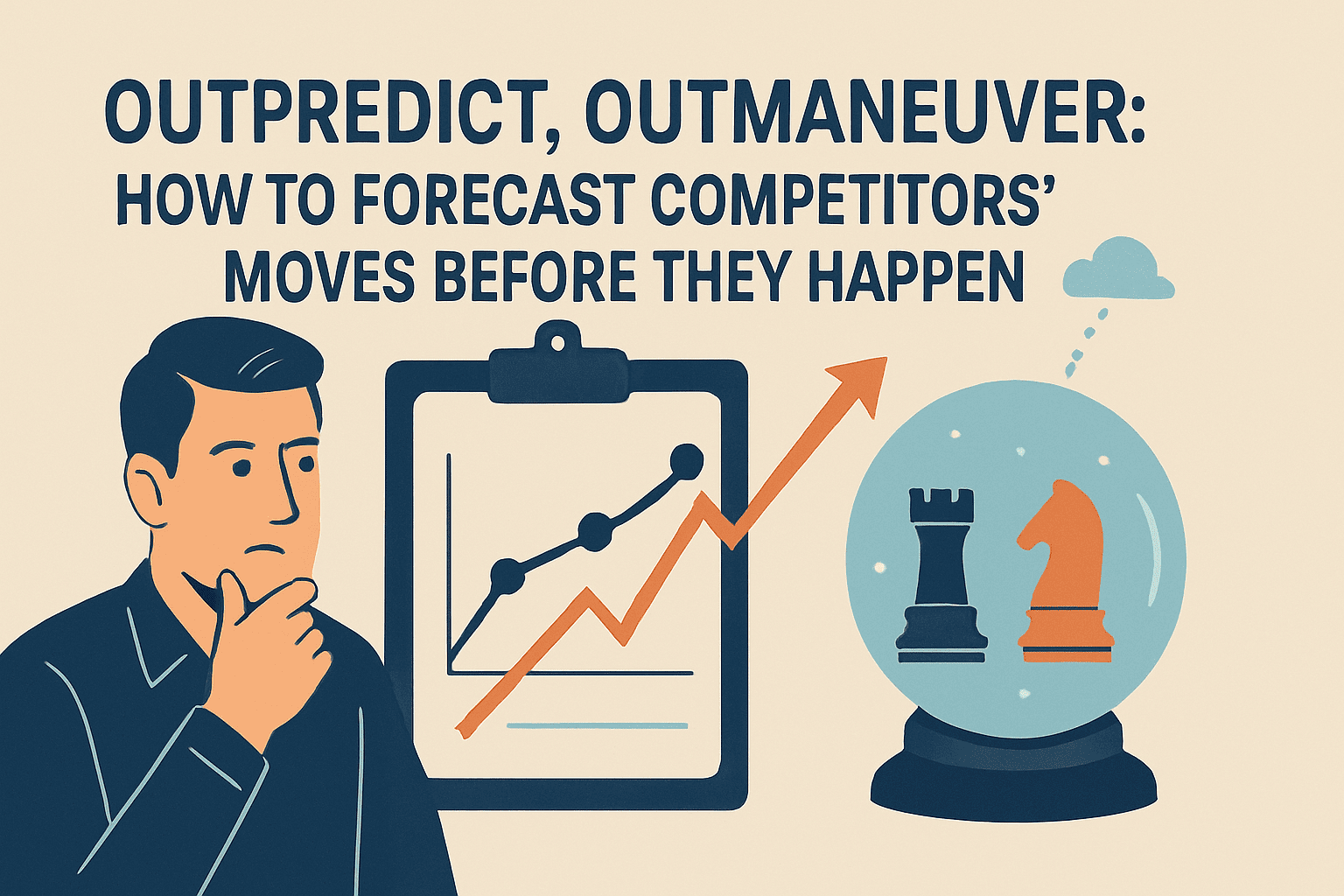Outpredict, Outmaneuver: How to Forecast Competitors’ Moves Before They Happen

In 2024, 83% of business leaders admitted their biggest regret was reacting too late to competitors’ strategic shifts (Forrester). The difference between market leaders and laggards isn’t just innovation—it’s anticipation. Startups and SMEs that decode competitors’ hidden signals before they act gain a 14-month head start on average (Gartner). Here’s how to spot these signals, and why tools like RivalSense are revolutionizing competitive foresight.
Why Anticipation Beats Reaction
Competitors rarely pivot in a vacuum. They leak intent through subtle, publicly available data—if you know where to look. Consider:
- Adobe anticipated Figma’s collaboration focus by tracking its surge in remote-work job postings.
- Tesla accelerated its Supercharger network after mining permit filings revealed rivals’ regional expansion plans.
The lesson? Winners don’t chase trends—they intercept them.
5 Hidden Data Signals That Reveal Competitors’ Next Moves
1. Hiring Patterns: The Ultimate Roadmap
What to Track:
- Roles emphasizing new skills (e.g., “Blockchain Engineer” in a fintech firm).
- Leadership hires from specific industries (e.g., a CPO from healthcare joining an edtech company).
Case Study:
When a SaaS competitor posted 15 roles for “AI Training Specialist,” a cybersecurity startup guessed they were building a ChatGPT rival. They launched AI threat-detection tools 8 months before the competitor’s launch, capturing 22% market share.
DIY Tip: Use LinkedIn’s “People Also Viewed” feature on competitor profiles to spot talent poaching trends.
2. Website Metadata: The Digital Tea Leaves
What to Monitor:
- Changes to
<title>tags or meta descriptions (e.g., shifting from “e-commerce platform” to “global logistics solution”). - New page URLs like
/pricing/enterpriseor/features/ai.
Pro Insight:
A 2024 Ahrefs study found 61% of companies test positioning changes via stealth website edits before public announcements.
3. Regulatory Footprints: Permits, Patents, and Pain Points
What Matters:
- FDA/EU regulatory filings hinting at product launches.
- Trademark applications for slogans or product names.
Example:
A food startup spotted a rival’s trademark application for “CrunchBlend™ Protein Bars.” They fast-tracked their own protein line, leveraging first-mover advantage in 3 regional markets.
4. Pricing Page Archaeology: The Subtext of Discounts
Key Clues:
- Limited-time offers targeting specific regions (geographic expansion signal).
- New “annual billing” options (cash flow crunch mitigation).
DIY Tool:
Use Wayback Machine (Archive.org) to compare pricing page snapshots monthly.
5. Earned Media: What Partners Leak
Watch For:
- Competitors’ clients mentioning unreleased features in case studies.
- Vendor announcements (e.g., “Proud to supply AI chips to [Competitor]”).
Case Study:
A biotech founder discovered a competitor’s partnership with a CRISPR lab via a vendor’s press release. They pivoted to mRNA delivery, sidestepping a saturated market.
The Problem with Manual Tracking: Speed Kills
While these signals are free to access, manual monitoring has fatal flaws:
- Time Cost: 11 hours/week spent sifting data (2024 Crayon Report).
- Confirmation Bias: Teams overvalue signals that align with their assumptions.
- Fragmented Insights: Job posts + pricing changes + permits = strategic intent. Alone, they’re noise.
RivalSense: Your AI-Powered Prediction Engine
RivalSense automates signal detection and connects dots most teams miss:
✅ Automatic Signal Prioritization
AI ignores trivial changes (e.g., blog updates) and flags high-impact moves like stealth pricing tests or leadership hires.
✅ Cross-Source Synthesis
Get alerts like: *“Competitor X filed a drone delivery patent + hired Amazon Logistics execs + edited ‘global shipping’ webpage. Likely launching logistics vertical in Q4.”*
✅ Competitive Timeline Forecasting
Visualize competitors’ probable moves 6-12 months out based on hiring, regulatory, and web activity.
Real-World Impact:
A fintech CEO used RivalSense to discover a rival’s FDIC application 4 months pre-announcement. They secured key banking partnerships first, reducing the competitor’s Series B valuation by 30%.
The Future Belongs to the Proactive
In 2025, competitive advantage isn’t about who has the most data—it’s about who deciphers it fastest. Manual tracking keeps you in the past. AI-driven tools like RivalSense future-proof your strategy.
👉 Stop Guessing, Start Predicting
*Join 4,500+ leaders who see around corners. Try RivalSense free for 14 days.*
Launch Your Free Trial →
Final Insight:
The next industry disruption won’t start with a press release. It’ll start with a job posting, a permit, or a meta tag. Will you notice?
